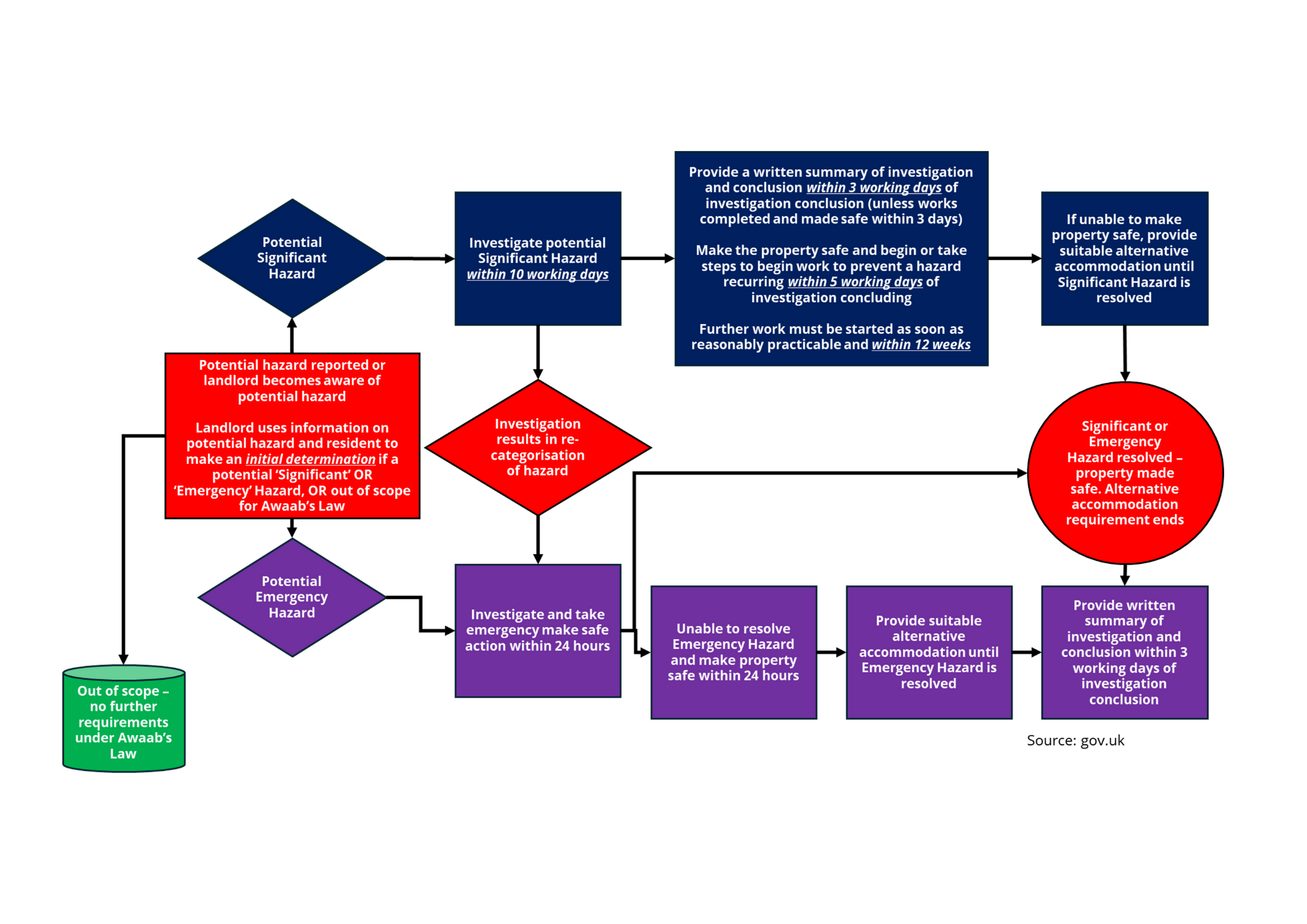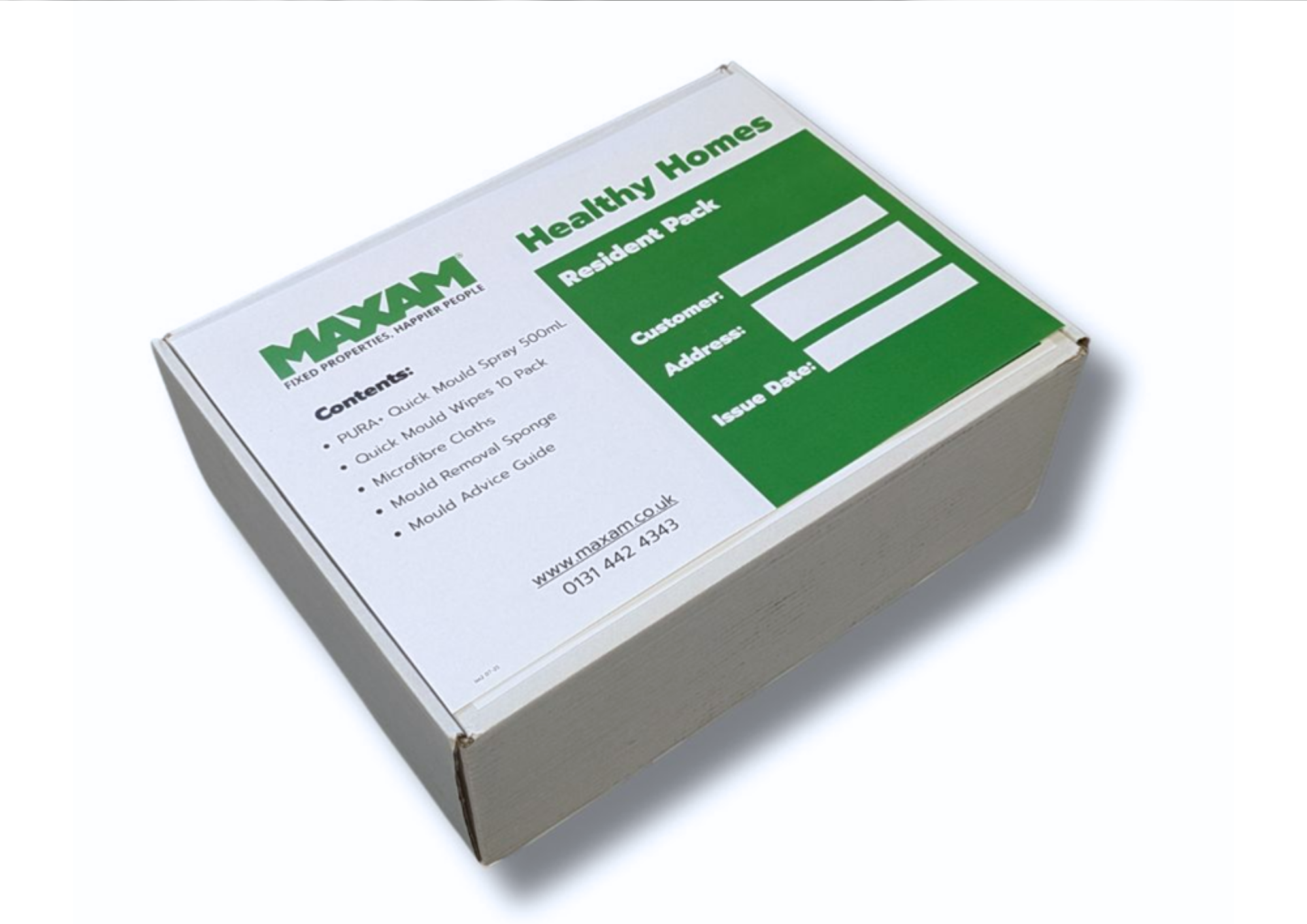As most would know, on 27 October 2025, Awaab’s Law came into force, establishing legally binding timescales for responding to damp and mould cases. This new law formalises expectations on investigation, remediation and communication, which strengthens accountability and improves tenant care.
Further hazard categories on the HHSRS will be phased in during 2026 and 2027. (GOV.UK guidance; CIH; Shelter)
STATUTORY RESPONSE REQUIREMENTS

3 OPERATIONAL PRIORITIES
We’ve seen housing associations and repairs providers broadly focusing on three key priorities: safety, speed, and thoroughness.
1. SAFETY
Damp and mould interventions must protect both residents and operatives. Products and methods are subject to COSHH obligations, and chlorine-based treatments, though common historically, may irritate skin and airways and require strong ventilation. (HSE COSHH, 22 Aug 2025; UKHSA chlorine safety note, 3 Sept 2024; NHS Inform, 1 Oct 2025)
As a result, many organisations are evaluating non-toxic formulations as part of wider safe-use protocols. Solutions such as MAXAM’s PURA+ and PURA+ Quick are being adopted where social housing repairs providers prefer non-chlorine, low-odour treatments, subject to COSHH assessment and training.
2. SPEED
The ‘First-time fix’ has become a key compliance metric, and Awaab’s law timeframes have created operational pressure to diagnose and remediate swiftly, avoiding repeated attendance. Formulas that kill mould roots and leave a protective barrier can support one-visit completion, whereas traditional single-use sprays may merely remove visible mould without preventing recurrence. The emphasis is on durability and efficiency rather than cosmetic improvement. (GOV.UK press notice)
3. THOROUGHNESS
The guidance stresses resolving underlying moisture drivers, not merely surface-level symptoms. This requires technical investigation (ventilation, thermal bridging, humidity), structured resident communication, and supplementary works carried out within the policy limits. The emerging good-practice model is “find, fix, future-proof” to reduce recurrence and ensure sustained compliance. (UKHSA damp and mould advice, 15 Aug 2024)
SUPPORTING TENANTS: HEALTHY HOMES PACKS
Along with their statutory duties, many providers are going one step further and supplying MAXAM’s Healthy Homes Kits to empower tenants in early identification and safe first-line management. Local authority practice shows increasing focus on practical tenant tools such as hygrometers to monitor indoor humidity, wipes for initial surface cleaning and simple guidance on ventilation and heating behaviours. (Westmorland and Furness guidance, accessed 2025; Vale of White Horse tenant advice, 2025)
Typically these include:
• PURA+ Quick Spray 500mL
• MAXAM Quick Wipes 10pack
• Hygrometer
• Simple Mould Advice leaflet
These are not a substitute for landlord duties but rather reinforce early reporting and shared awareness of mould risks, supporting health and compliance outcomes.
A SYSTEMIC SHIFT
Awaab’s Law represents a step-change in expectations for social housing providers. The combination of statutory timescales, enforceable rights and public health imperatives is driving sector-wide evolution in repairs methodology, product selection, and tenant engagement.
The organisations adapting most effectively are those embedding safety, speed and thoroughness, supported by robust training, evidence based product choice and proactive resident communication. The trajectory is clear: a long term move from reactive treatments to comprehensive indoor-environment health management, ensuring every resident has a dry, safe and healthy home.
Please feel free to get in touch regarding your damp, mould and disrepair team requirements:
0131 442 4343 | info@maxam.co.uk | www.maxam.co.uk